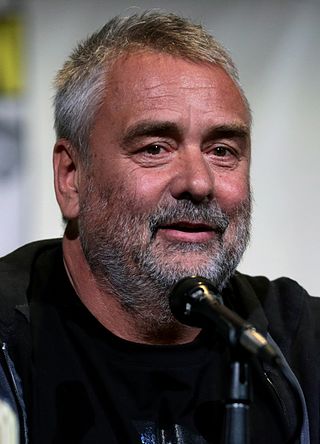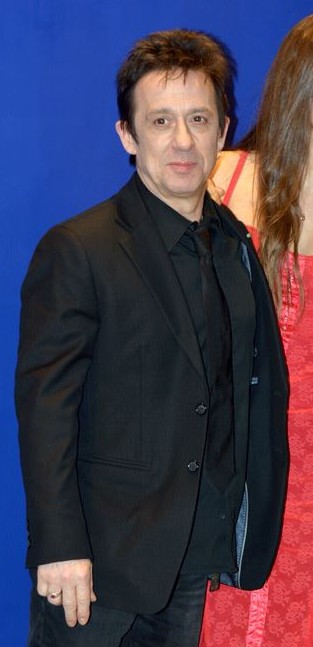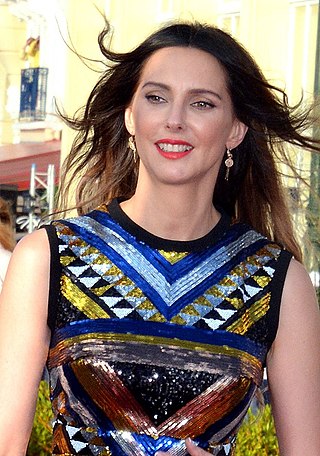
Luc Paul Maurice Besson is a French filmmaker. He directed or produced the films Subway (1985), The Big Blue (1988), and La Femme Nikita (1990). Associated with the Cinéma du look film movement, he has been nominated for a César Award for Best Director and Best Picture for his films Léon: The Professional (1994) and The Messenger: The Story of Joan of Arc (1999). He won Best Director and Best French Director for his sci-fi action film The Fifth Element (1997). He wrote and directed the 2014 sci-fi action film Lucy and the 2017 space opera film Valerian and the City of a Thousand Planets.

Éric Serra is a French composer. He is a frequent collaborator of film director Luc Besson.

Alfred Thomas Highmore is an English actor. He is known for his starring roles beginning as a child, in the films Finding Neverland (2004), Charlie and the Chocolate Factory (2005), Arthur and the Invisibles (2006), August Rush (2007), and The Spiderwick Chronicles (2008). He won two consecutive Critics' Choice Movie Awards for Best Young Performer.

The Magic Roundabout is a 2005 animated adventure fantasy film based on the television series of the same name. Unlike the show, which was presented with stop-motion animation, the film utilizes computer-generated animation. The story sees a group of unlikely heroes who go on a quest to stop a reawakened villain, who intends on freezing the world, from retrieving a set of powerful diamonds.

Arthur and the Invisibles is three video games based on the 2006 French film Arthur and the Minimoys by Luc Besson. It retained the original name of the movie in Europe. The game involves Arthur and his two friends, Selenia and Bétamèche, on their mission to save the Minimoys' world from destruction. The game incorporates Besson's Minimoy universe and its inhabitants.

BUF Compagnie is a French visual effects company, specializing in CGI for feature films, commercials, and music videos.
Arthur is a common masculine given name.
Thierry Arbogast is a French cinematographer. He is best known for his collaborations with director Luc Besson on the films La Femme Nikita (1990), Léon: The Professional (1994), The Fifth Element (1997), The Messenger: The Story of Joan of Arc (1999), Angel-A (2005), Arthur and the Invisibles (2006), Arthur and the Revenge of Maltazard (2009), The Extraordinary Adventures of Adèle Blanc-Sec (2010), The Lady (2011), The Family (2013), Lucy (2014), Valerian and the City of a Thousand Planets (2017), and Anna (2019).

Arthur and the Invisibles: Original Motion Picture Soundtrack is the original soundtrack to the 2006 French film Arthur and the Minimoys and was released by Atlantic Records on January 9, 2007.

EuropaCorp S.A. is a French motion picture company headquartered in Saint-Denis, a northern suburb of Paris, and one of a few full service independent studios that both produces and distributes feature films. It specializes in production, distribution, home entertainment, VOD, sales, partnerships and licenses, recording, publishing and exhibition. EuropaCorp's integrated financial model generates revenues from a wide range of sources, with films from many genres and a strong presence in the international markets.
Stéphane Roux is a French voice actor and animator for Disney. He has provided the voice of the cooking channel narrator in the English version of Ratatouille, among other voice talents.

Arthur and the Revenge of Maltazard is a 2009 English-language French live-action/animated fantasy film directed and co-written by Luc Besson, based on the third book of the Arthur children's books series by Besson. It is the sequel to Arthur and the Minimoys (2006), and the second installment in the Arthur film series.

The Arthur series refers to a series of fantasy novels for children written by Luc Besson, a film director and producer, and published from 2002 to 2005 in France, the United States and the United Kingdom.

Arthur 3: The War of the Two Worlds is a 2010 English-language French live-action/animated fantasy film directed and co-written by Luc Besson, based on the fourth and final book of the Arthur children's books series by Besson. It is the sequel to Arthur and the Revenge of Maltazard (2009) and the third installment in the Arthur film series. The film was shot back-to-back with the previous installment. It is the last installment in the main series.
Events in 1992 in animation.

Frédérique Bel is a French actress and model. A native of Annecy in the French Alps, she became known for her role as Dorothy Doll in the La Minute Blonde sequence from Le Grand Journal on Canal+. She has since played main and supporting roles in many productions.

A Monster in Paris is a 2011 French 3D computer-animated musical comedy science fantasy adventure film directed by Bibo Bergeron, and based on a story he wrote. It was produced by Luc Besson, written by Bergeron and Stéphane Kazandjian, and distributed by EuropaCorp Distribution, and features the voices of Sean Lennon, Vanessa Paradis, Adam Goldberg, Danny Huston, Madeline Zima, Matthew Géczy, Jay Harrington, Catherine O'Hara, and Bob Balaban. Many plot elements are drawn from Gaston Leroux's novel The Phantom of the Opera. It was released on 12 October 2011. It was also produced by Bibo Films, France 3 Cinéma, Walking The Dog, uFilm, uFund, Canal+, France Télévisions, CinéCinéma, Le Tax Shelter du Gouvernement Fédéral de Belgique and Umedia. Its music was composed by Matthieu Chedid, Sean Lennon and Patrice Renson.
Events in 2006 in animation.

ARTHUR is an inverted-spinning dark ride roller coaster at Europa-Park in Rust, Germany. The attraction opened in spring 2014 as part of the wider "ARTHUR - In the Minimoys Kingdom" area themed after the Arthur series of books and films by Luc Besson.

Arthur, malédiction is a 2022 French meta psychological horror film directed by Barthélemy Grossmann. It is the fourth installment overall in the Arthur film series, which is based on the eponymous children's fantasy novel series by Luc Besson, and serves a spin-off in which the original trilogy is presented as a film-within-a-film. The film stars an ensemble cast, and follows a group of Arthur fans who discover the house that was used as one of the trilogy live-action sequences set, only to find themselves being hunted down one-by-one by a group of deranged role-players.















